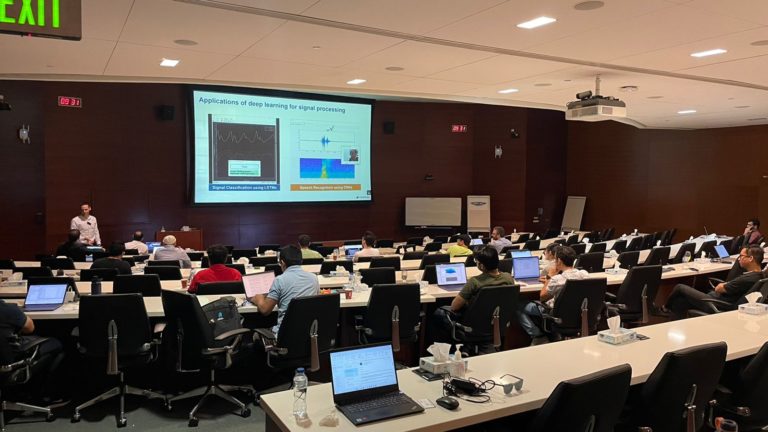
Seismic Facies Classification
CES and the KAUST Supercomputing Core Laboratory (KSL) organised a one-day workshop on the topic of Machine Learning for Engineers using MATLAB. The event was both an online and in-person workshop. Flavio Pol and his team of Application Engineers visited KAUST and were on-hand to make sure participants got the most out of the event.
This was the third time the team has organised a workshop on the topic of Machine Learning. This workshop focused on the fundamentals of Machine Learning and gave participants the opportunity to get hands-on experience in MATLAB and how to apply deep learning to a specific engineering problem – Seismic Facies Classification.
The workshop was open to all engineers, researchers, students and managers working at KAUST and across Saudi Arabia and focused on those people who have limited or no experience in either Machine Learning or MATLAB.
Training Material
Presentation Slides
Please email anne@cesimulations for a copy of slides
MATLAB Download Instructions
- KAUST attendees should install MATLAB on their laptops from here
- Non-KAUST cannot use KAUST licenses. They should have it installed on their laptops. We might be able to provide some light weight web-version access on the morning of the event.
Products used during this workshop
- MATLAB
- Statistics and Machine Learning Toolbox
- Deep Learning Toolbox
- Parallel Computing Toolbox
- Image Processing Toolbox
- Signal Processing Toolbox
- Wavelet Toolbox
Seismic Facies Classification
With the dramatic growth and complexity of seismic data, manual annotation of seismic facies has become a significant challenge. One of the challenges lies in classification where interfaces between different rock types inside the Earth are delineated in a seismic image i.e., dividing the subsurface into regions that can be classified as distinct geologic facies. Delineating these facies requires months of efforts by geoscientists.
Can AI algorithms solve this? Can they be trained to recognize distinct geologic facies in seismic images, producing an interpretation that could pass for that of an expert geologist, or be used as a starting point to speed up human interpretation? Recently, deep learning algorithms (particularly CNNs) have been used to simplify this task.
During the Machine Learning at KAUST workshop: we spoke about how MathWorks helped solve this challenge with a unique and innovative approach. We demonstrate the advantage of using advanced signal processing techniques to pre-process signals before feeding them to deep learning algorithms. Our approach combines maximal overall discrete wavelet transform with recurrent neural networks (RNN) to improve the automated seismic facies analysis. This proposed framework generates more accurate results in a more efficient way. In addition, you will learn the following:
How MATLAB simplifies the application of advanced techniques like wavelets through interactive apps.
Creating Deep Learning models with just a few lines of MATLAB code
Exploring a seismic volume with Volume Viewer App
Accelerate algorithms on NVIDIA® GPUs or the cloud without specialized programming or extensive knowledge of IT infrastructure.
For more details about the methodology, please refer to this MathWorks blog.

